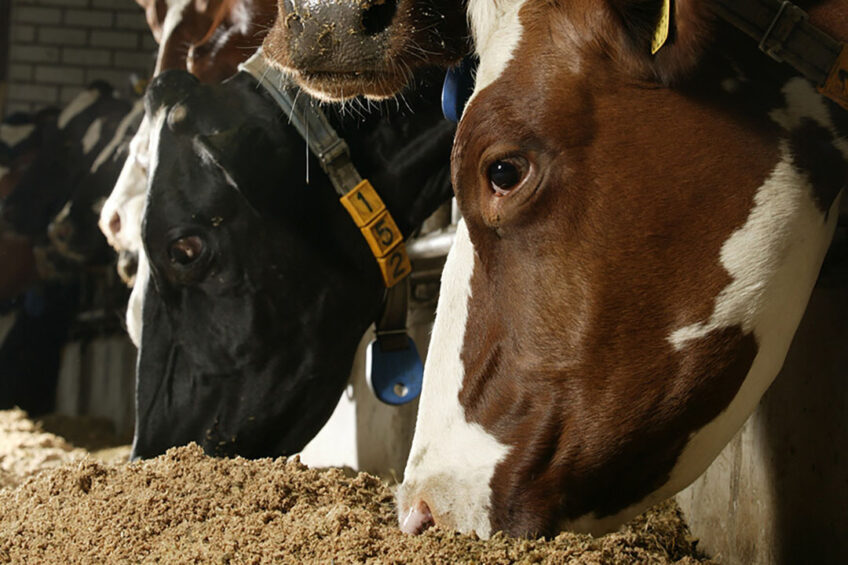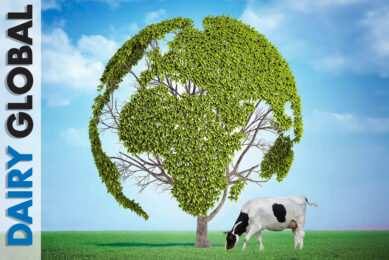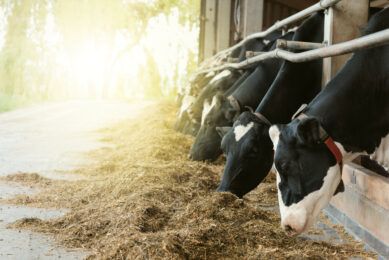Protected fats in ruminant nutrition

The addition of fat to the diets of dairy animals can improve the energy balance in lactating cows and hence improves fertility, milk production and other biological functions. The advantages of increasing the energy density of diets without reducing digestibility can be achieved if the dietary fat is protected from hydrogenation in the rumen.
Initially, dietary fats were protected by coating them with protein that was then treated with formaldehyde, so that it was not degraded in the rumen. This product did not become commercially viable because of its interference with rumen fermentation, high cost of manufacture, difficulty in producing a consistently reliable product and the lack of government approval for use of formaldehyde. Progress was, therefore, made in developing protected fats that are not only inert in the rumen but also efficiently absorbed from the small intestine.

The following are the technologies that are currently adopted for these purposes:
Crystalline or prilled fatty acids
These are made by liquifying and spraying the saturated fatty acids under pressure into a cooled atmosphere, so that the melting point of the fatty acids is increased and they do not melt at rumen temperature, thus resisting rumen hydrolysis.
Fatty acyl amide
This product consists of an FA chemically linked through an amide bound to an amine. This protection technology was used to create rumen bypass methionine, as the amide bond between the carboxyl group of stearic acid or other acyl groups and the amine of methionine resists rumen bacterial breakdown.
Fat composite gels
Fat droplets are embedded here within the gelled protein matrix in which the lipids are protected against degradation, modification or removal from the gel during passage through the rumen.
Calcium salts of long-chain fatty acids
These products are prepared by the reaction of the carboxyl group of long-chain fatty acids (LCFA) and calcium salts (Ca++). They have the highest intestinal digestibility and serve as an additional source of calcium.
Protected fat and dry matter intake
The inclusion of fat in the diet negatively affects cows’ dry matter intake (DMI) due to the following factors which can be avoided, at least partially, by feeding protected fats:
- An increase in ruminating time due to negative effects on rumen digestion;
- A slowdown of rumen emptying due to a metabolic effect of LCFA;
- Secretion of unidentified chemical mediators as a response to the flow of into the duodenum; and
- A satiety effect of decreasing digestive motility as a result of intestinal peptide secretion.

Effects on digestibility of nutrients
There was no effect of supplementation of protected fat on the digestibility of most of the feed nutrients, but the digestibility of EE increased significantly from 73% to 85.5% when protected fat was supplemented in the diet of the dairy animals. The increase in the digestibility of the fat indicates that added fat is more digestible than the basal diet fat or fat supplementation dilutes the endogenous lipid secretions, resulting in a more accurate estimate of the true lipid digestibility. Protein digestibility also increases with protected fat supplementation, but in other cases no increase in protein digestibility was noted. Fibre digestibility varied with the level of protected fat supplementation in the diet and was not affected at the low level of supplementation.
Reproduction
It is well accepted that supplemental rumen-protected fat benefits herd reproductive performance by minimising body weight loss and accelerating body weight gain after calving. In addition, research strongly suggests that unsaturated vegetable fatty acids could have additive effects on reproductive parameters in the cow, including follicular size and hormone patterns. Linoleic acid has been identified as one of the essential fatty acids that may have direct effects on reproductive function. The higher linoleic acid level is the basis for at least one rumen-protected fat product that is promoted within the feed industry for its supposed ability to improve reproductive performance.
Milk production
According to many reports, a significant increase of 5.5–24.0% in the milk yield of dairy animals was observed when fed supplemented bypass fat. The stage of lactation influences the supplemental effect of the bypass fat on milk yield and FCM yield which is generally increased in early and peak lactation, probably due to the higher energy intake, more efficient use of fat by the mammary gland and enhancement of tissue mobilisation before peak production. It was reported that the FCM yield of lactating cows was increased when Ca-LCFA was supplemented at up to 6% of the dietary DM but decreased at 9% of the dietary DM. Supplementation of bypass fat adversely affects the milk protein percentage (-0.12 percentage unit) due to the dilution of milk protein as higher milk volume synthesised is not synchronised with the uptake of amino acids by the mammary gland.
Effects on heat-stressed animals
It makes sense that enhancing ration energy density by utilising fats could be particularly beneficial during hot weather. However, research on the effects of feeding high-fat rations during hot weather has yielded inconsistent results. This is probably because it is very easy to overfeed unprotected fat sources, such as whole oilseeds, when the cow’s feed intake is significantly reduced due to heat stress. If fat is overfed, then the negative effects of the fat on fibre digestibility will negate any possible gains with increased ration density. Because bypass fats do not affect rumen fermentation, they should probably make up a greater percentage of the total fat included in the ration during hot weather.
Economic benefits
Feeding of protected fat to dairy animals has been shown to give a profit of US$ 1.3 per cow per day, apart from the improvement in reproductive performance and health of animals. An additional profit of US$ 0.6 per animal per day can be made when feeding bypass protein together with the protected fat.
References are available from the author upon request.
Join 13,000+ subscribers
Subscribe to our newsletter to stay updated about all the need-to-know content in the dairy sector, two times a week.










